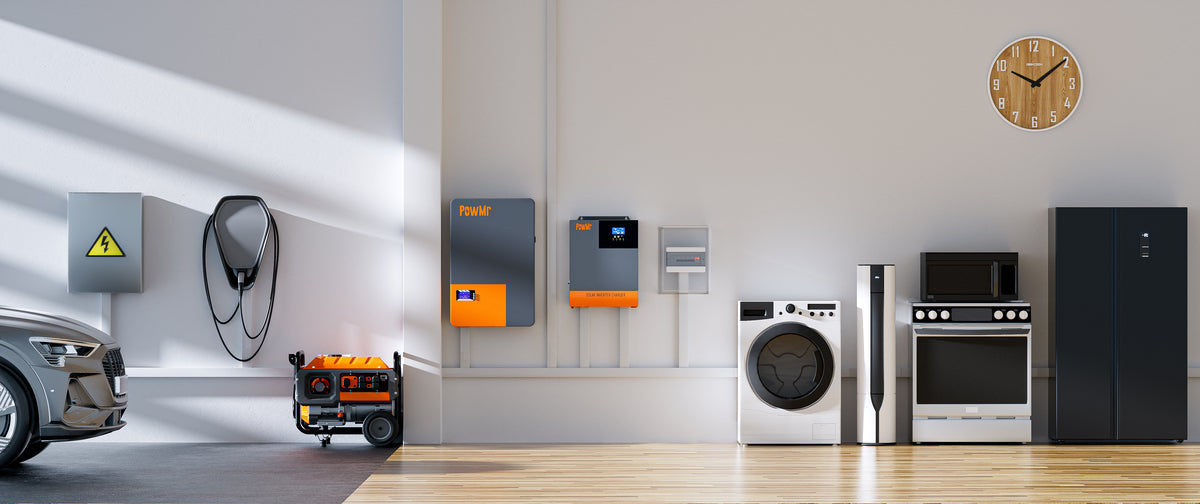I see how it works off-grid, but I don't see how it works in mixed mode or how to wire it up. I think the ac out is not supposed to connect back to my house while it is connected to the grid. If I do that I get an error 15. It also didn't make sense to me that I should do that. So is the inverter putting power back into my house thru the inverter's ac input? Will the inverter know that when I set it up in hybrid mode under UTI to work like that?
The manual:
4. Mixed functions mode: When the battery is not available or the battery is fully charged, theload is provided by PV and commercial power, PV maximum output power output.
I got a reply from Mattb4:
No the AC out does not connect out to your grid supply or home panel from where you get AC in from. It is an off grid AIO and will not back feed. The AC out should only be used to a panel that is disconnected from the grid.
Mixed mode refers to operating without battery or when battery is full. This allows mixing of PV and grid to AC out though I have never used it so have no experience with its operation.
So, if I read this and factor in what you provided as an interpretation this says, that the pv and commercial power can be combined to power an isolated load that is not on the same panel as the grid. Right?
If so, I am disappointed. I was thinking that it would lower my power bill by whatever the inverter could produce from my pv.
I am mislead by the advertised claims by the manufacturers. What kind of AIO or other kind of inverter config will do what I want to do? Or am I misunderstanding that the inverter should work with the commercial power and just augment the power that I am using. I'm thinking that the two should be combined and use as much solar as I could produce and use in my home and buy the rest from a commercial source.
Mattb4 responded:
You would need a true hybrid AIO (Solark or EG4 18kPV as example) if you want to feed your main panel from the AC in. I would recommend you post in the regular Forum so that others can learn/advise.
So I am posting here. With the understanding that the Powmr 3k24v will not do what I thought it would or what I want.
Like Reply
The manual:
4. Mixed functions mode: When the battery is not available or the battery is fully charged, theload is provided by PV and commercial power, PV maximum output power output.
I got a reply from Mattb4:
No the AC out does not connect out to your grid supply or home panel from where you get AC in from. It is an off grid AIO and will not back feed. The AC out should only be used to a panel that is disconnected from the grid.
Mixed mode refers to operating without battery or when battery is full. This allows mixing of PV and grid to AC out though I have never used it so have no experience with its operation.
So, if I read this and factor in what you provided as an interpretation this says, that the pv and commercial power can be combined to power an isolated load that is not on the same panel as the grid. Right?
If so, I am disappointed. I was thinking that it would lower my power bill by whatever the inverter could produce from my pv.
I am mislead by the advertised claims by the manufacturers. What kind of AIO or other kind of inverter config will do what I want to do? Or am I misunderstanding that the inverter should work with the commercial power and just augment the power that I am using. I'm thinking that the two should be combined and use as much solar as I could produce and use in my home and buy the rest from a commercial source.
Mattb4 responded:
You would need a true hybrid AIO (Solark or EG4 18kPV as example) if you want to feed your main panel from the AC in. I would recommend you post in the regular Forum so that others can learn/advise.
So I am posting here. With the understanding that the Powmr 3k24v will not do what I thought it would or what I want.
Like Reply




